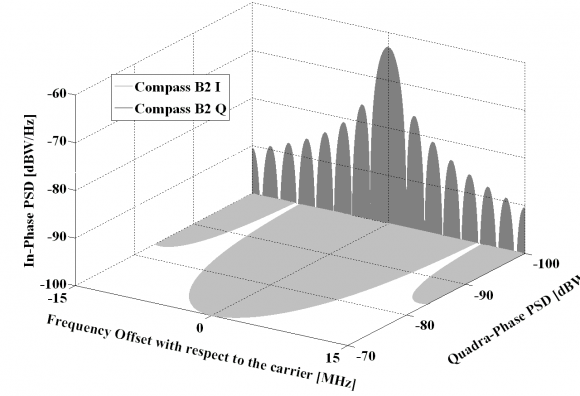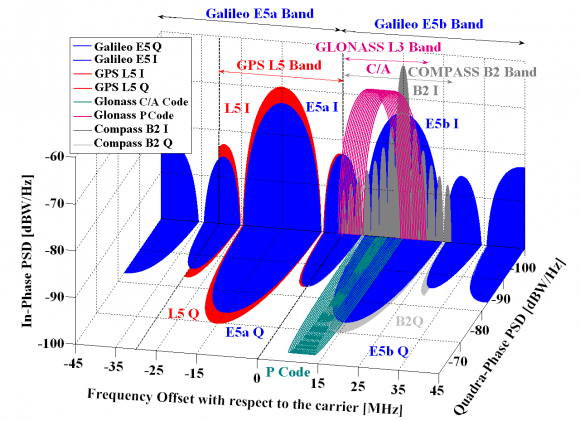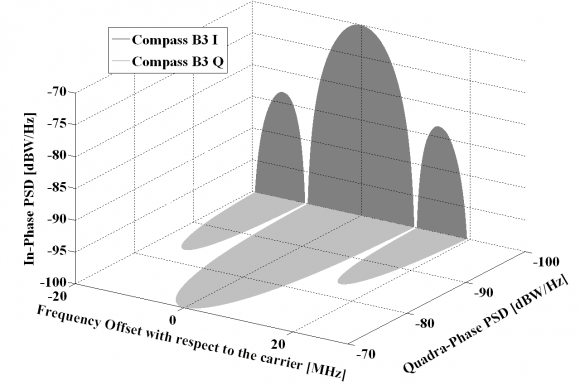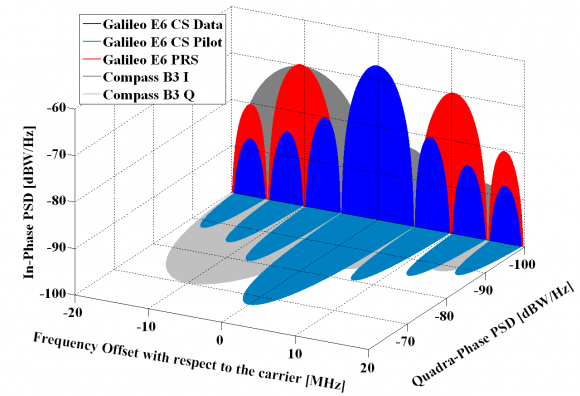If you wish to contribute or participate in the discussions about articles you are invited to contact the Editor
BeiDou Signal Plan: Difference between revisions
Gema.Cueto (talk | contribs) |
Gema.Cueto (talk | contribs) |
||
| Line 12: | Line 12: | ||
The B1I signal is composed of the carrier frequency, ranging code and navigation message. The ranging code and navigation message are modulated on carrier. The B1I signal is expressed as follows<ref name="B1I">[http://en.beidou.gov.cn/SYSTEMS/Officialdocument/201902/P020190227601370045731.pdf]BeiDou Navigation Satellite System Signal In Space Interface Control Document Open Service Signal B1I (Version 3.0) </ref>: | The B1I signal is composed of the carrier frequency, ranging code and navigation message. The ranging code and navigation message are modulated on carrier. The B1I signal is expressed as follows<ref name="B1I">[http://en.beidou.gov.cn/SYSTEMS/Officialdocument/201902/P020190227601370045731.pdf]BeiDou Navigation Satellite System Signal In Space Interface Control Document Open Service Signal B1I (Version 3.0) </ref>: | ||
S<sup | S<sup>j<\sup><sub>[B1I]<\sub> (t) = AB1ICjB1I(t)DjB1I(t)cos(2πf1t + ѰjB1I) | ||
Where: | Where: | ||
Revision as of 08:35, 15 October 2019
| Fundamentals | |
|---|---|
| Title | BeiDou Signal Plan |
| Author(s) | J.A Ávila Rodríguez, University FAF Munich, Germany. |
| Level | Advanced |
| Year of Publication | 2011 |
Presently, the in-orbit operational BDS satellites providing open services include 5 GEO satellites, 7 IGSO satellites and 21 MEO satellites, which can be further divided as 15 BDS-2 satellites ( 5 BDS-2G, 7 BDS-2I, 3 BDS-2M) and 18 BDS-3 satellites (BDS-3M). In addition to B1I and B2I signals, the B1C and B2a ones have started broadcasting by the BDS-3M satellites[1].
BeiDou B1 Band
The B1I signal is composed of the carrier frequency, ranging code and navigation message. The ranging code and navigation message are modulated on carrier. The B1I signal is expressed as follows[2]:
Sj<\sup>[B1I]<\sub> (t) = AB1ICjB1I(t)DjB1I(t)cos(2πf1t + ѰjB1I)
Where: • Superscript j: satellite number • AB1I : amplitude of B1I • CB1I : ranging code of B1I • DB1I : data modulated on ranging code of B1I • f1 : carrier initial phase of B1I • ѰB1I : carrier initial phase of B1I
It is important to note that the GPS L1C pilot and data signals are shown in quadrature in the figure although according to [GPS ICD-800][3] the final phasing is still to be decided. To conclude some technical characteristics of the BeiDou B1 signals are given next:
 Table 1: BeiDou B1 signal characteristics [Compass ITU Filing] [4].
Table 1: BeiDou B1 signal characteristics [Compass ITU Filing] [4].
BeiDou B2 Band
Similar to the B1 band, not all the technical aspects of the BeiDou signals in B2 have been defined yet. Nonetheless a proposed signal waveform has already been submitted to the ITU [Compass ITU Filing] [4]. Next figure shows the spectral details of the studied option.
As also done for the rest of GNSS bands, we show in the next figure all the systems together.
To conclude, some technical characteristics on the BeiDou B2 signals are presented more in detail in the next table:
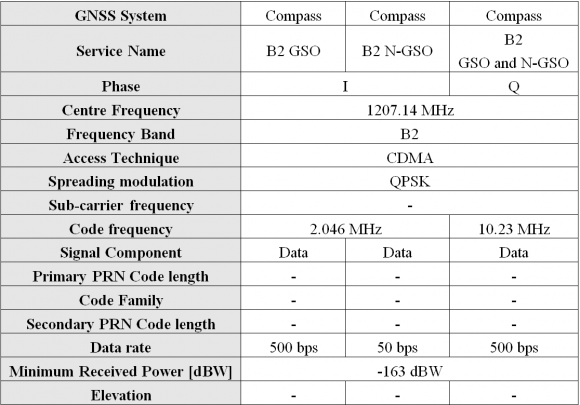 Table 2: BeiDou B2 signal technical characteristics [Compass ITU Filing] [4].
Table 2: BeiDou B2 signal technical characteristics [Compass ITU Filing] [4].
BeiDou B3 Band
Finally, the spectral characteristics of the BeiDou B3 signals are also shown here. Similar to the B1 and B2 bands, not all the technical aspects of the BeiDou signals are defined yet. Next figure shows the Power Spectral densities of the proposed BeiDou signals in B3:
In order to have a better insight on how the Galileo E6 – BeiDou B3 band looks like, the following figure presents all the planned signals together.
To conclude, some technical characteristics on the BeiDou B3 signals are provided next [Compass ITU Filing] [4].
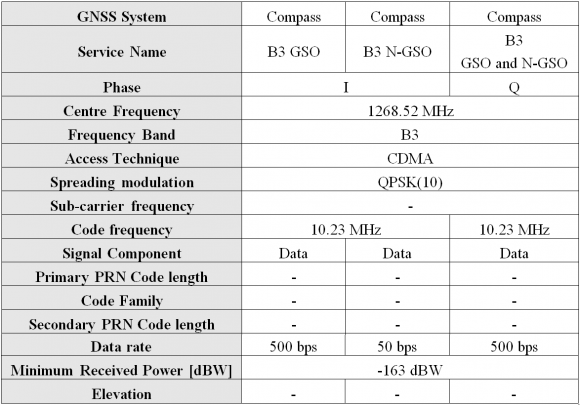 Table 3: BeiDou B3 signal technical characteristics [Compass ITU Filing] [4].
Table 3: BeiDou B3 signal technical characteristics [Compass ITU Filing] [4].
References
- ^ [2]BeiDou Navigation Satellite System Signal In Space Interface Control Document Open Service Signal B1I (Version 3.0)
- ^ [GPS ICD-800, 2011] IS-GPS-800 Revision B, IS-IRN-800B-001, Navstar GPS Space Segment/User Segment L1C Interfaces, 21 September 2011.
- ^ a b c d e Cite error: Invalid
<ref>tag; no text was provided for refs namedCOMPASS_ITU
Credits
The information presented in this NAVIPEDIA’s article is an extract of the PhD work performed by Dr. Jose Ángel Ávila Rodríguez in the FAF University of Munich as part of his Doctoral Thesis “On Generalized Signal Waveforms for Satellite Navigation” presented in June 2008, Munich (Germany)

